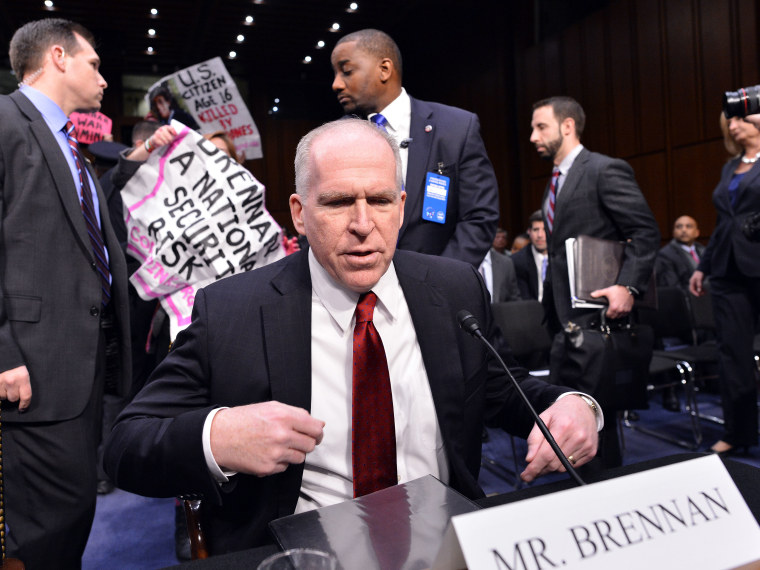At his confirmation hearing on Thursday, potential CIA director John Brennan insisted that targeted killing programs were used only as "a last resort to save lives when is there is no other alternative."
"So, we need to make sure that there is an understanding and, the people that were standing up here today, I think they really have a misunderstanding of what we do as a government and the care that we take and the agony to make sure that we do not have any collateral injuries or deaths," he said.
Whether Brennan and other members of President Obama's national security team go through "agony" is a question only they can answer. But the claim that the Obama administration takes extraordinary pains to avoid civilian casualties is belied by even the little we know about the targeted killing campaign.
For one thing, the Bureau of Investigative Journalism estimates that there have been 311 drone strikes in Pakistan under President Obama alone. That's a lot of last resorts! That number also doesn't cover non-drone targeted killings or strikes in Yemen, Afghanistan and elsewhere.
It is also important to note that many of those strikes are "signature strikes," meaning that they do not have an identifiable target. Instead, those drone strikes are carried out against anyone who happens to fit a particular "signature"—for example, "young men toting arms in an area controlled by extremist groups." It remains unclear how the Obama administration could determine that they have no other choice but to target suspected militants before they have even determined who those suspected militants are.
Lastly, many of these "last resort" strikes are what are called "double taps": an attack in which two drones are fired at the same area in quick succession, striking not only the target but anyone who attempts to help the wounded. According to researchers from Stanford Law School's International Human Rights and Conflict Resolution Clinic and New York University School of Law's Global Justice Clinic, the available evidence suggests that "such secondary strikes have killed and maimed first responders coming to the rescue of those injured in the first strike."
Residents of the Yemeni village of Beit al Ahmar evidently don't believe that the drone strike that killed suspected terrorist Adnan al Qadhi was a last resort. According to his former neighbors, "Qadhi could have been captured easily." Nor is it clear that the White House actually knows whether or not all the "militants" it has slain were actually militants. According to the New York Times' sources, the administration "in effect counts all military-age males in a strike zone as combatants ... unless there is explicit intelligence posthumously proving them innocent."
Perhaps Brennan and the rest of the national security team really do take every possible measure to avoid collateral damage. Perhaps every single drone attack was tragic yet unavoidable. But that's not what the available evidence suggests—and in making its own case, the White House has been less than forthcoming.
